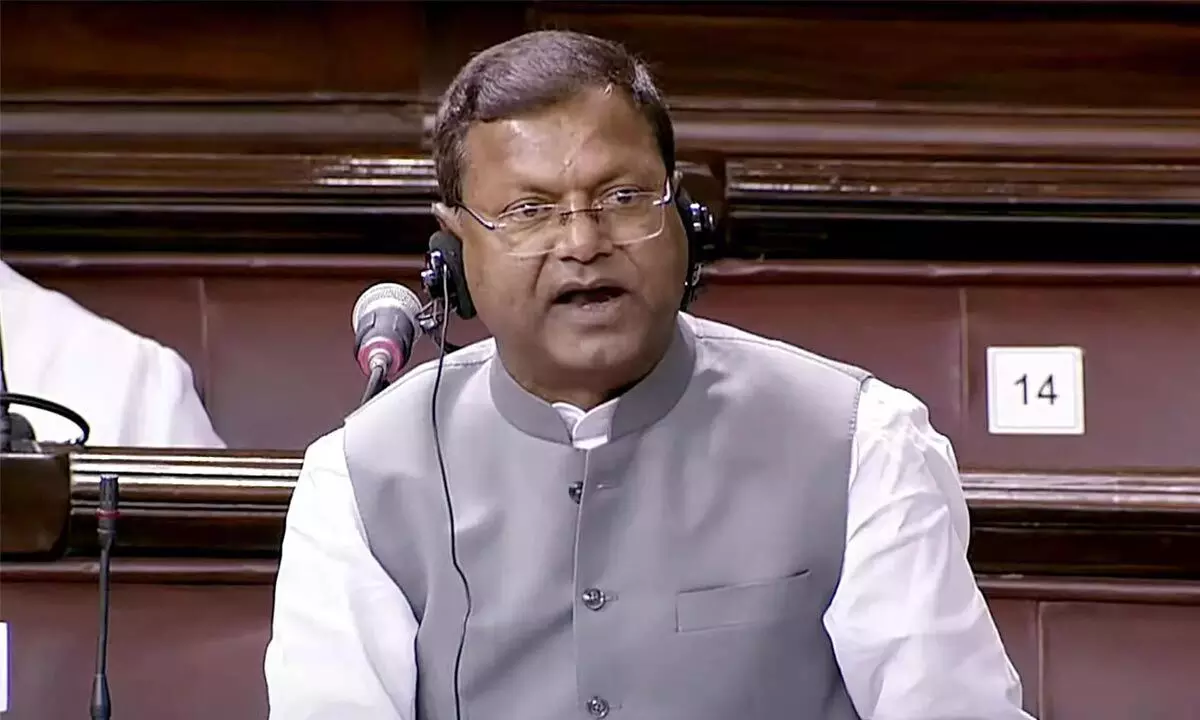Need for international collaboration on crypto assets regulation: MoS Finance
Crypto Assets and NFTs are by definition borderless and require international collaboration to prevent regulatory arbitrage, MoS Finance Minister said
image for illustrative purpose

New Delhi: Minister of State for Finance Pankaj Chaudhary on Monday underlined the need for international collaboration to prevent regulatory arbitrage with regard to crypto assets.
Crypto Assets and Non-Fungible Tokens(NFTs) are by definition borderless and require international collaboration to prevent regulatory arbitrage, he said in a written reply in the Lok Sabha. "Therefore, any legislation for regulation or for banning can be effective only with significant international collaboration on evaluation of the risks and benefits and evolution of common taxonomy and standards. There is no available timeline on such collaboration as multiple countries and organisations are involved in the process," he said.
In reply to another question, Chaudhary said, the central government's debt was Rs 58.6 lakh crore (52.2 per cent of GDP) and Rs 155.6 lakh crore (57.1 per cent of GDP) as of March 31, 2014, and March 31, 2023, respectively. At the end of FY 2019-20, the Central Government debt was Rs 105.1 lakh crore (52.4 per cent of GDP), which increased to Rs 121.9 lakh crore (61.5 per cent of GDP) at the end of FY 2020-21, he said.
This change in Central Government debt by about nine percentage points in a single year was mainly on account of Covid-19 pandemic, which hugely disrupted projections of the government's public finances. However, he said, the Central Government's debt has declined to 57.1 per cent of GDP at the end of FY 2022-23. It needs to be noted that, India's nominal GDP has increased from Rs 112.34 lakh crore in 2013-14 to Rs 272.41 lakh crore in 2022-23, he said.
The risk profile of Central Government's debt stands out as safe and prudent in terms of accepted parameters of indicator-based approach for debt sustainability, he said, adding, the Government debt is held predominantly in domestic currency. As on March 31, 2014, he said, Government's external debt (at current exchange rate) was 6.4 per cent of total debt and 3.3 per cent of GDP, which has declined to 4.8 per cent of total debt and 2.7 per cent of GDP as on March 31, 2023. Government's external debt is financed mainly from multilateral and bilateral agencies, he said.
Replying to a question on inflation, he said, the government has taken various measures to augment domestic availability and stabilize the prices of essential food items. These steps include releases from the buffer stock, imposition of stock limits, monitoring of stocks declared by entities to prevent hoarding as also requisite changes in trade policy instruments like rationalization of import duty, changes in import quota, and restrictions on exports of specific commodities, he said. Besides, he said, in order to control core (non-food, non-fuel) inflation, the Government has, from time to time, calibrated the import duty and excise duty on specified key inputs.
In response to another question, the minister said, the government has taken various measures including delicately balancing the need for broad-based and sustained economic revival and fiscal consolidation. The government has announced its commitment to reduce fiscal deficit to a level below 4.5 per cent of GDP by 2025-26. Increasing the buoyancy of tax revenue through improved compliance, improving efficiency and effectiveness of public expenditure, augmenting productive efficiency of the economy, etc. are the important measures taken by the Government to bring down the debt and strengthen the economy, he said.
Chaudhary in another reply said an export target of $2 trillion has been set for the year 2030 for India. No target for trade deficit has been fixed so far, he said. "At end-March 2023, India's external debt was placed at $624.7 billion as against $619.1 billion as at end-March, 2022. Valuation gains due to the appreciation of the US dollar vis-à-vis the Indian rupee and major currencies such as Yen, SDR, and Euro were placed at $20.6 billion," he said. Excluding the valuation effect, external debt would have increased by $26.2 billion instead of $5.6 billion at end-March 2023 over end-March 2022, he said.

